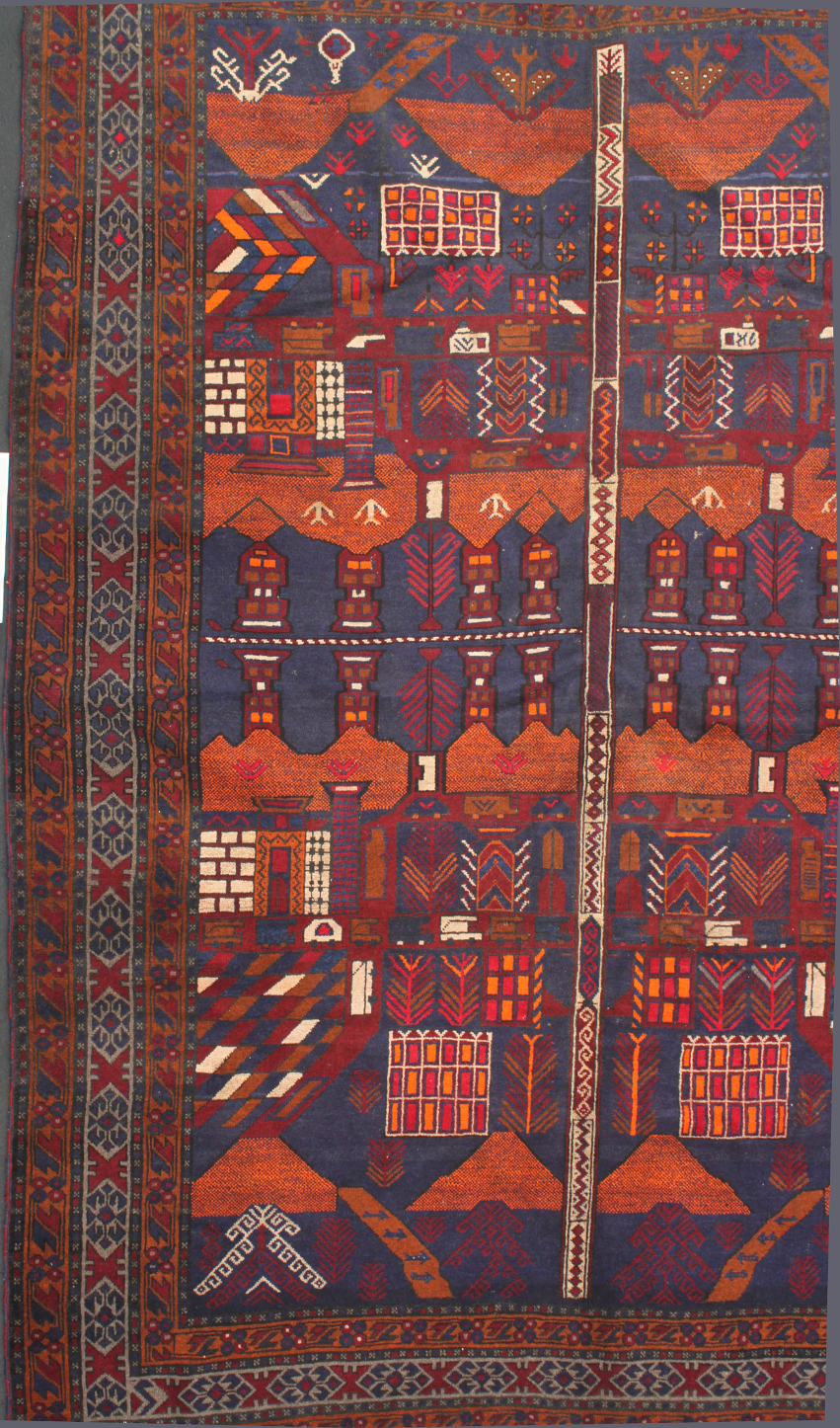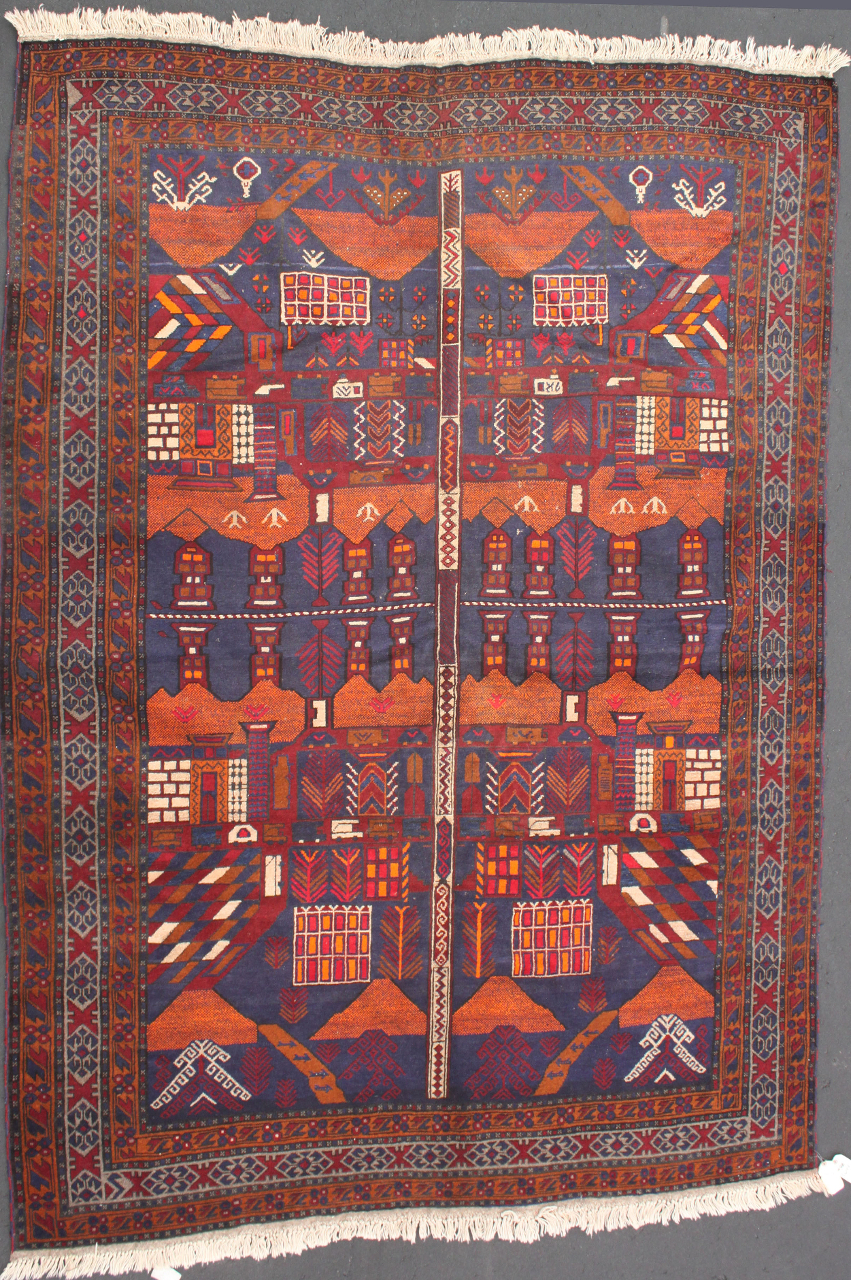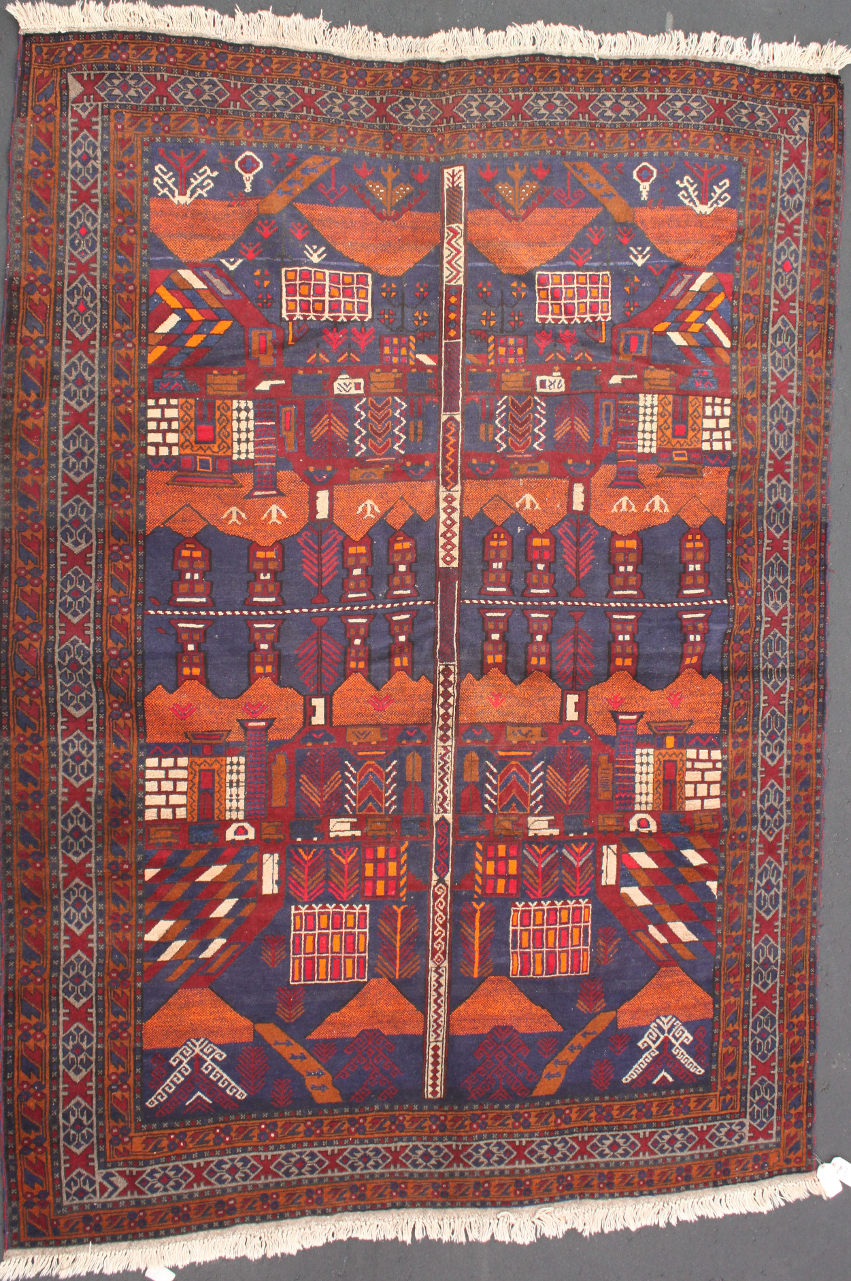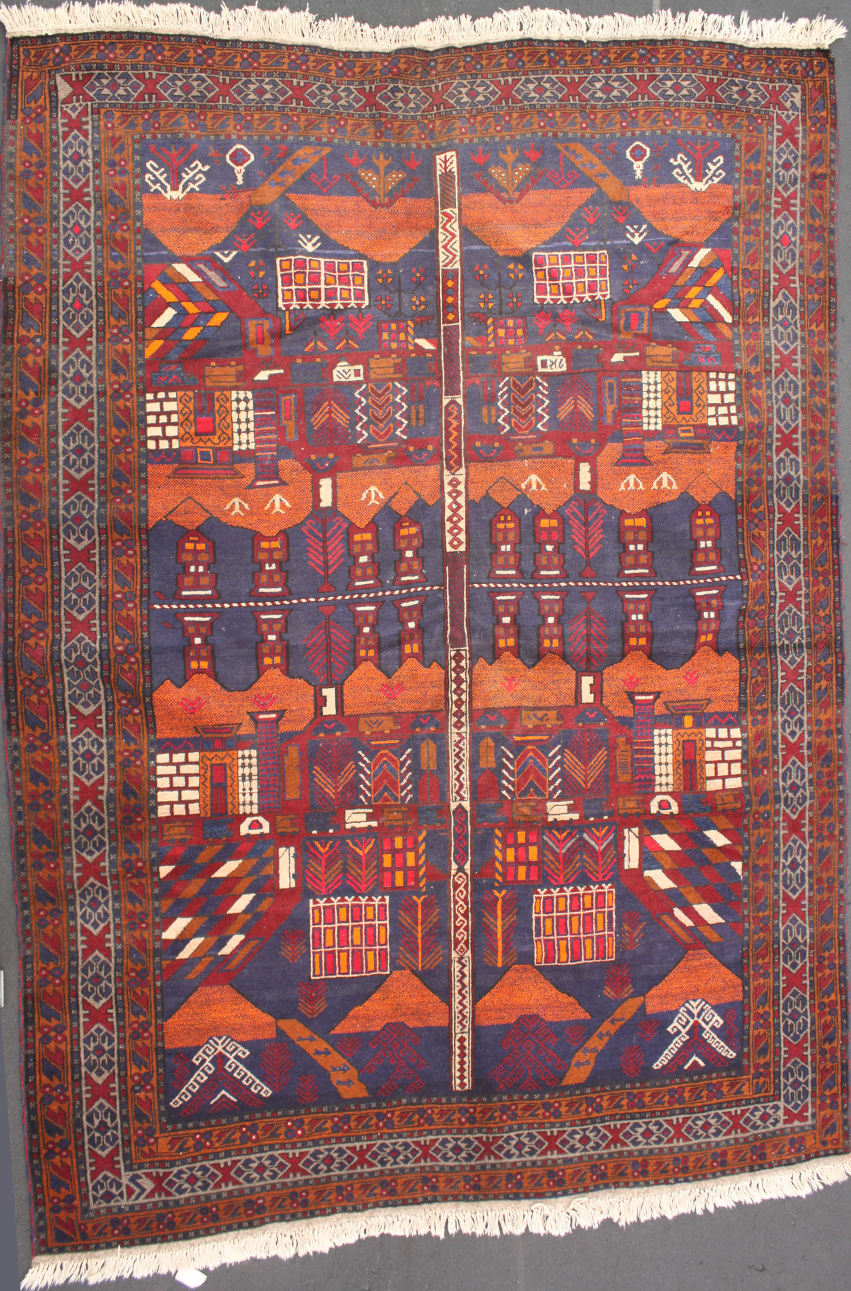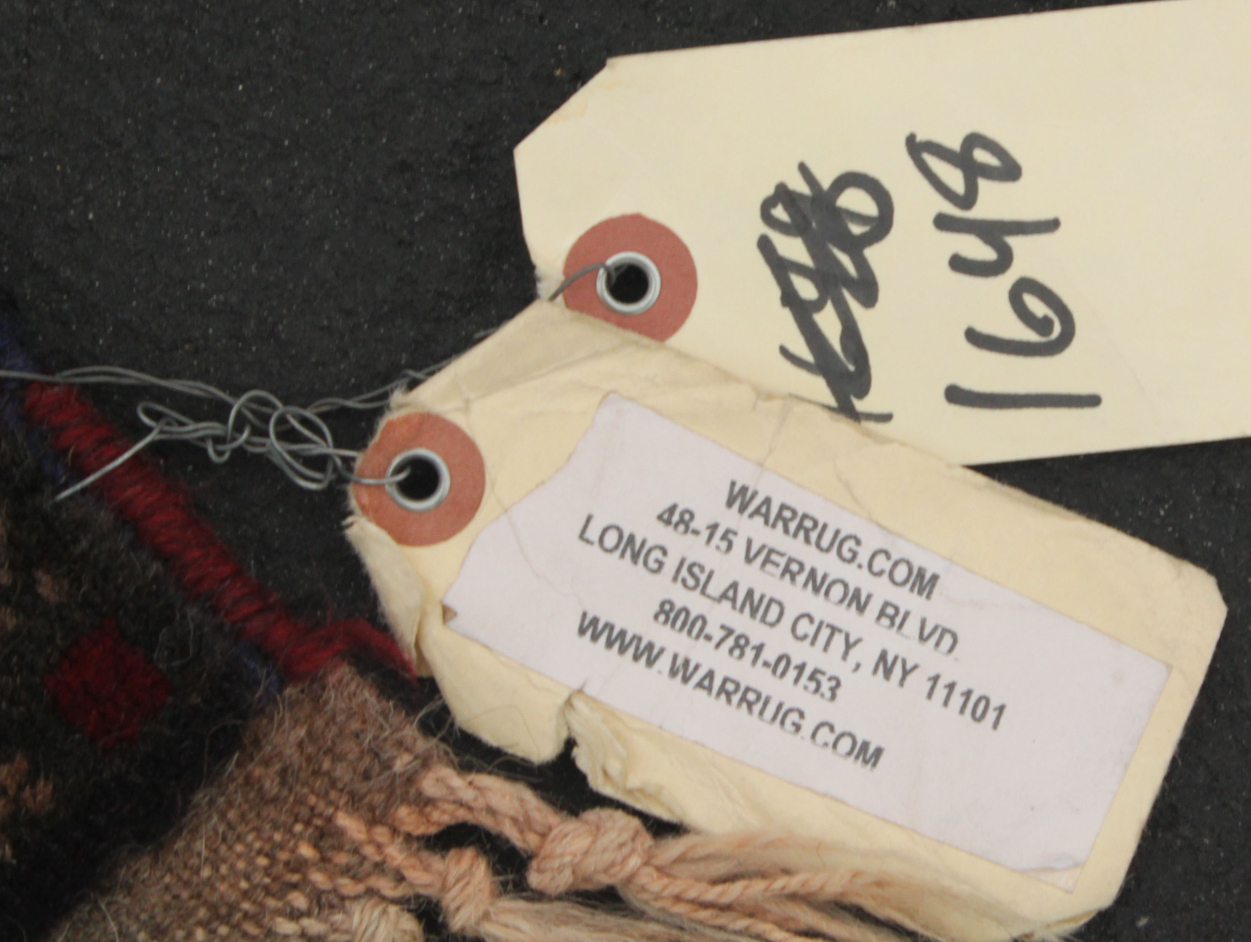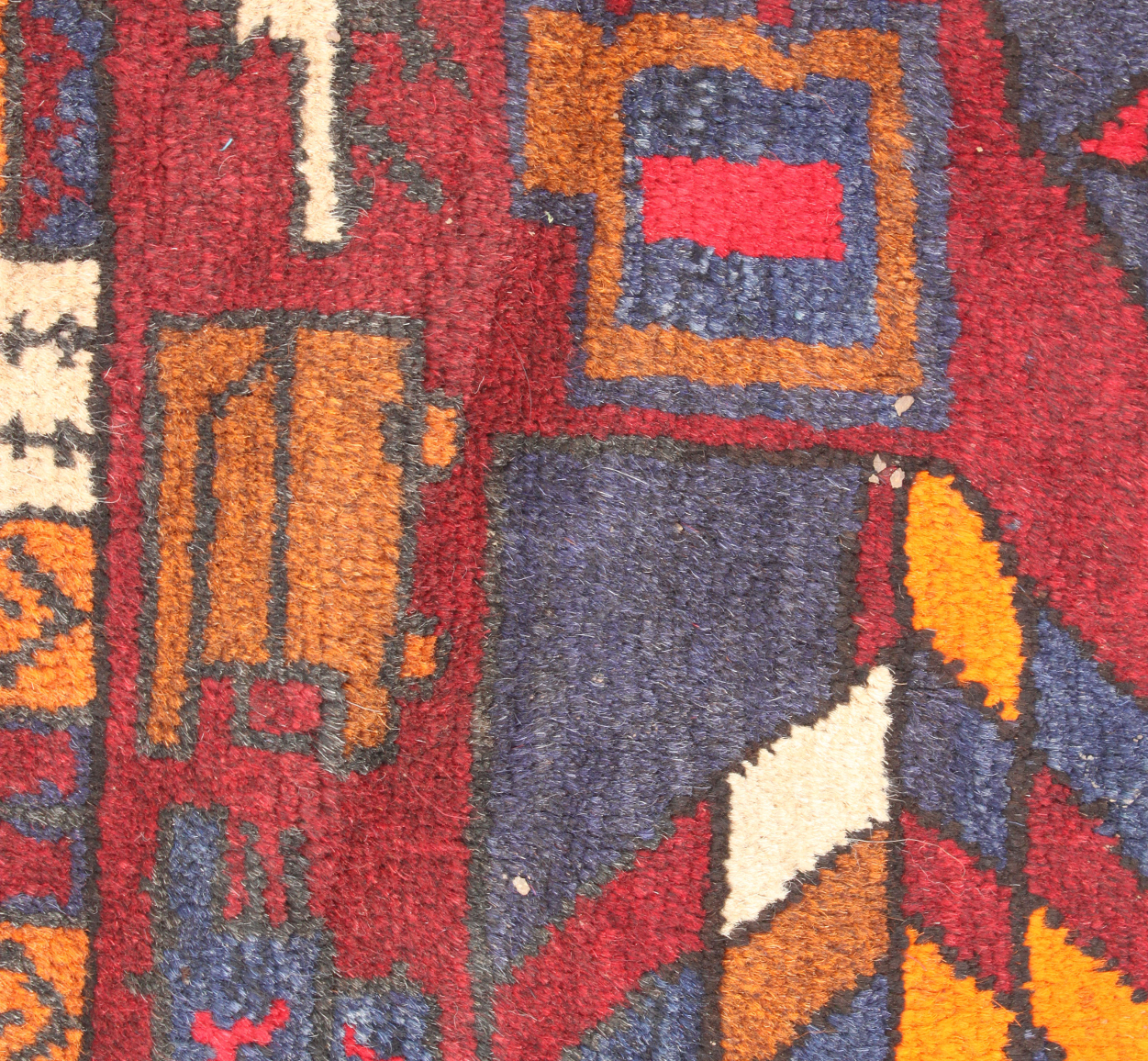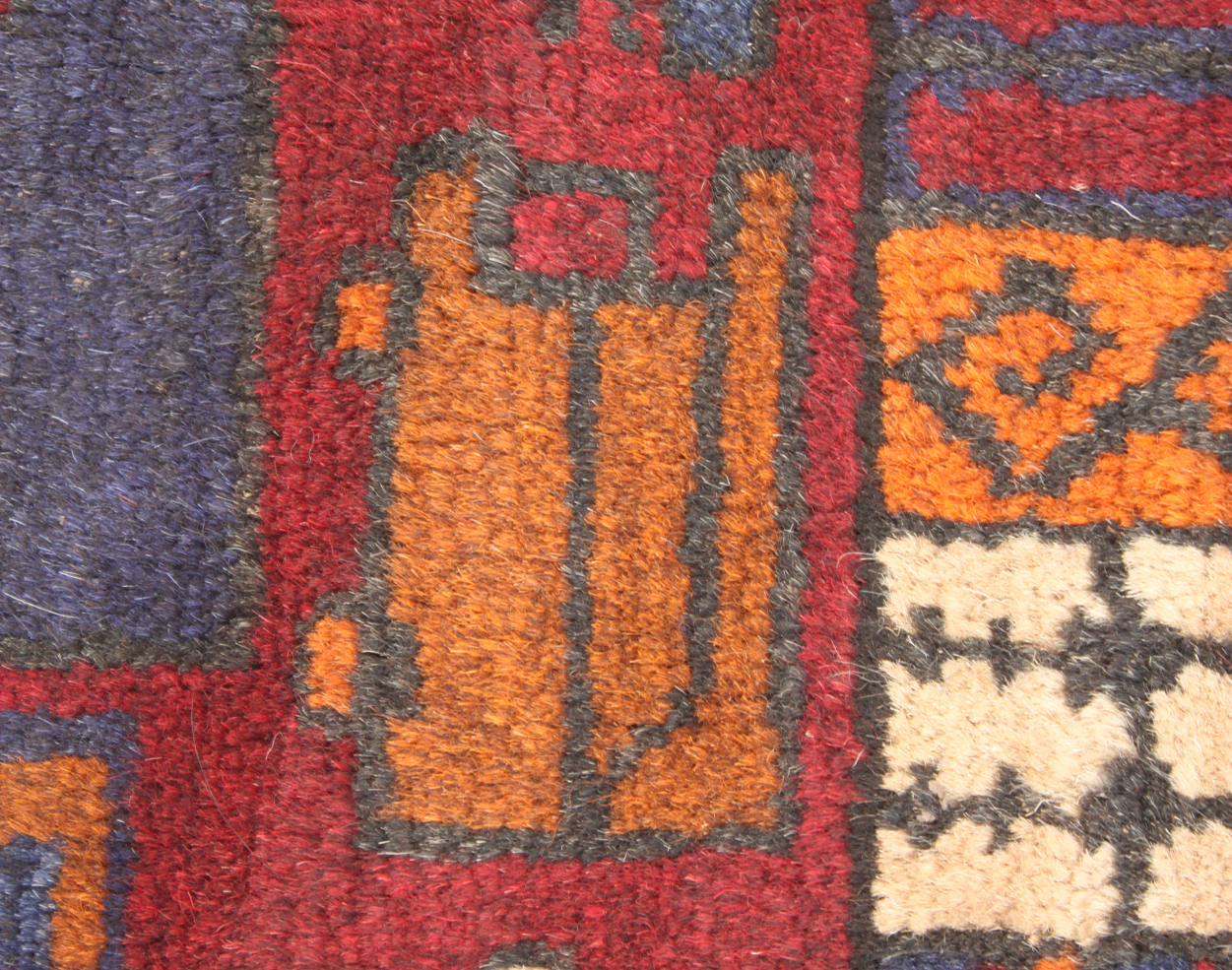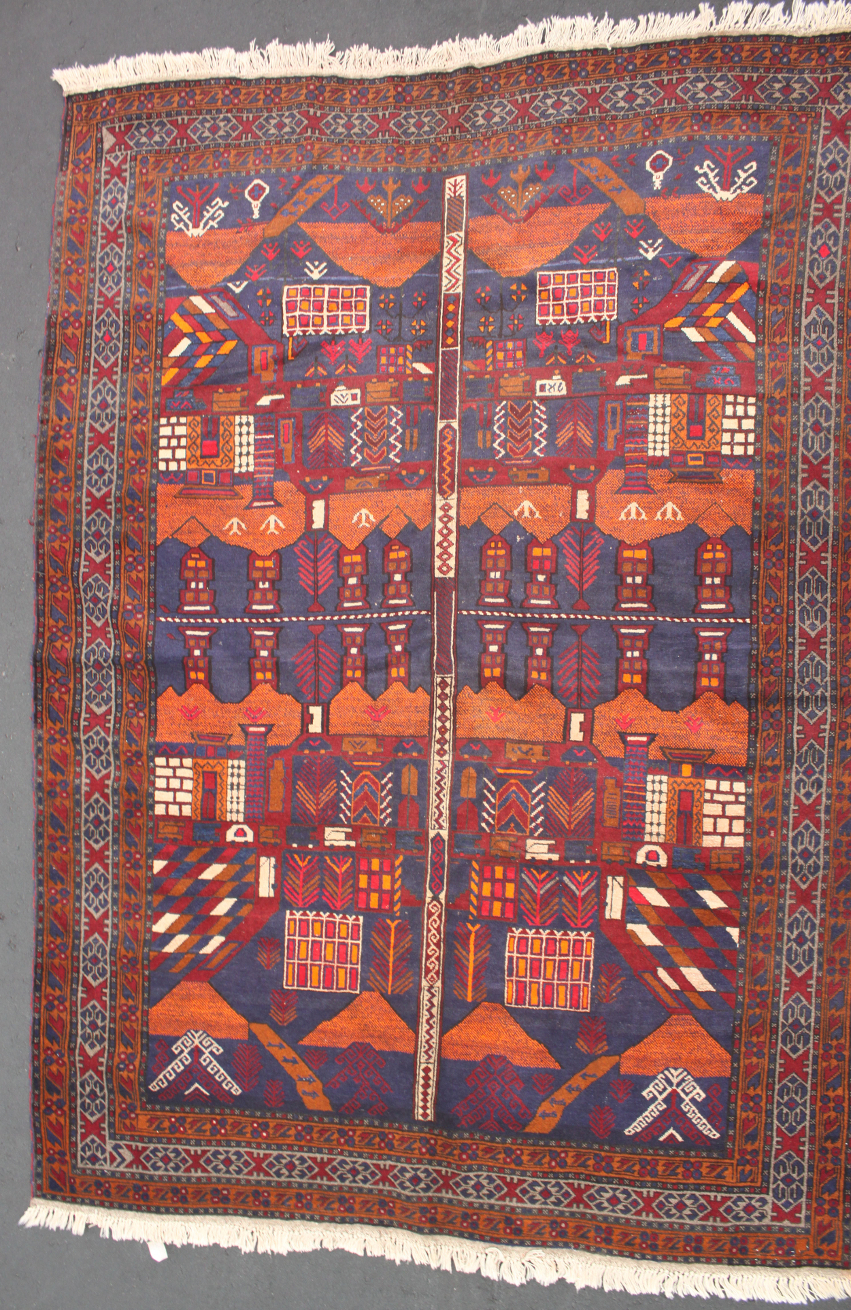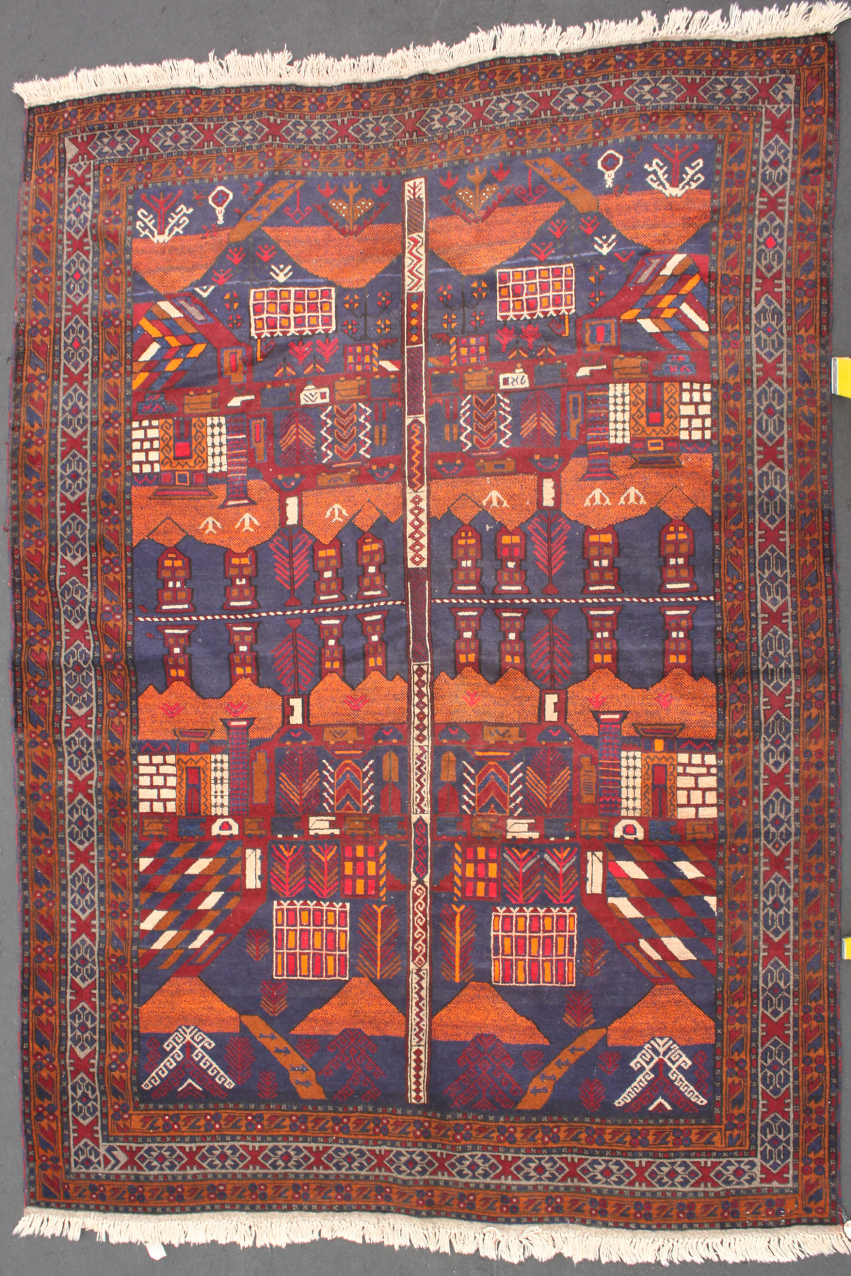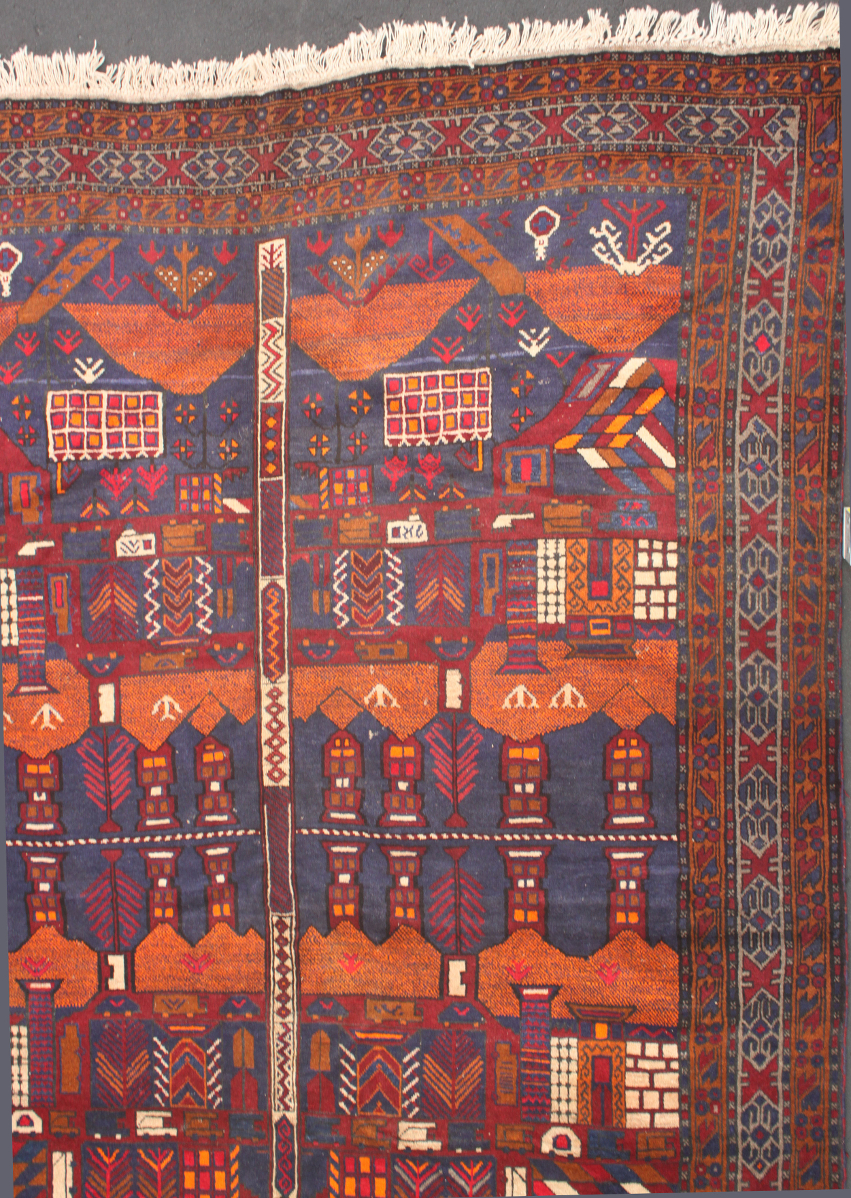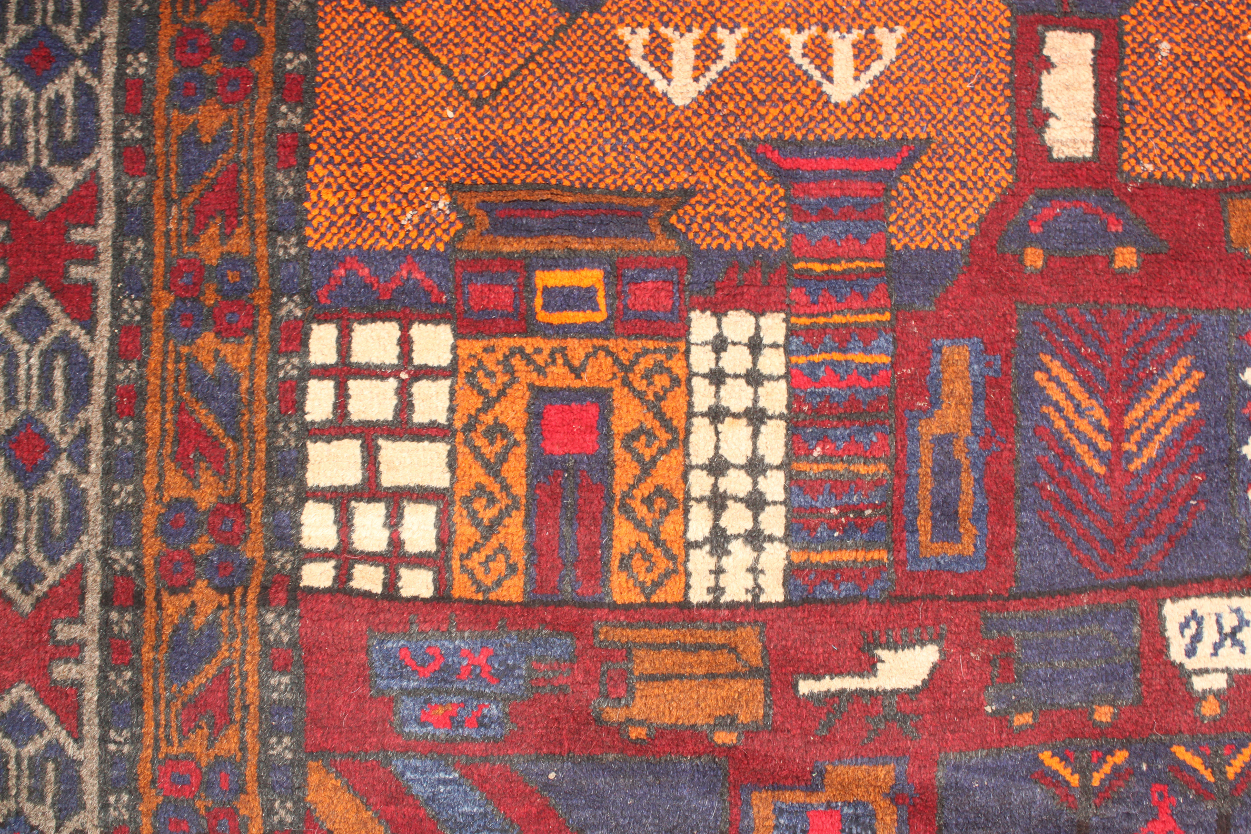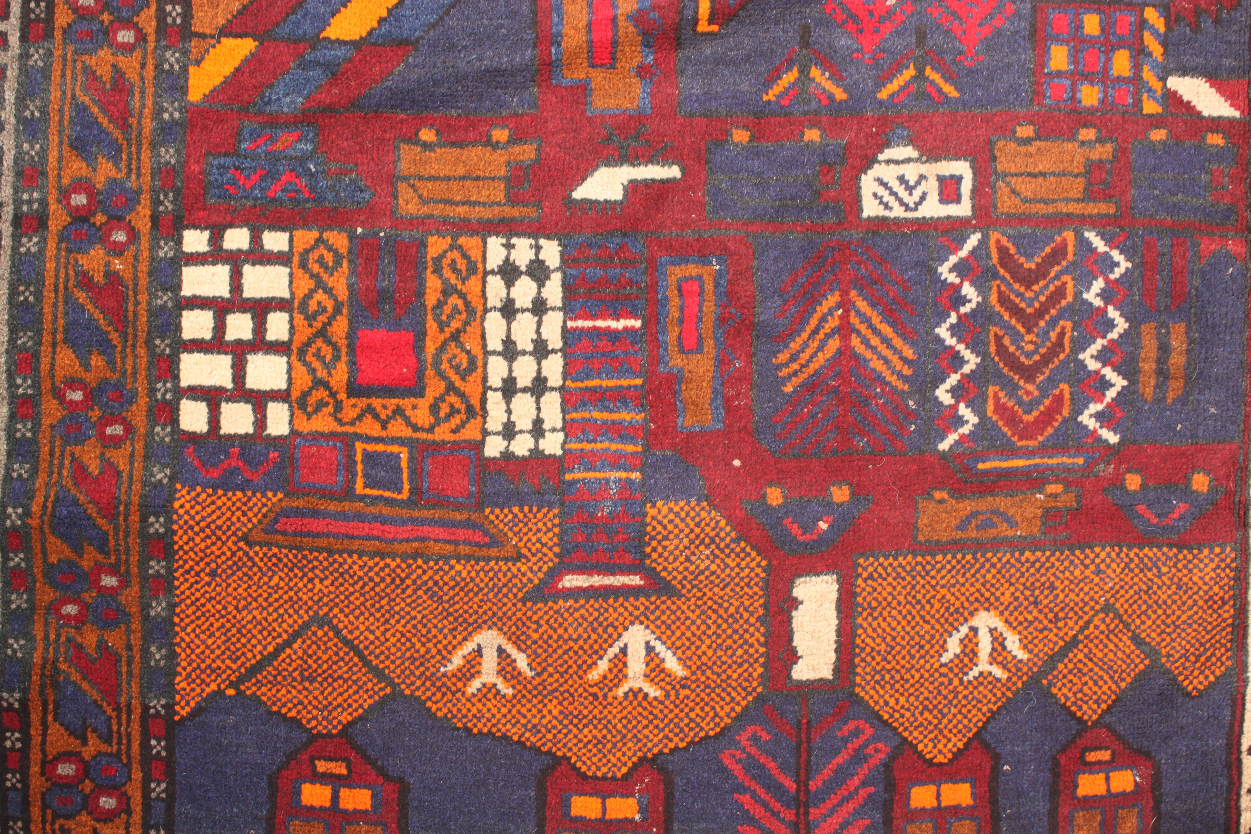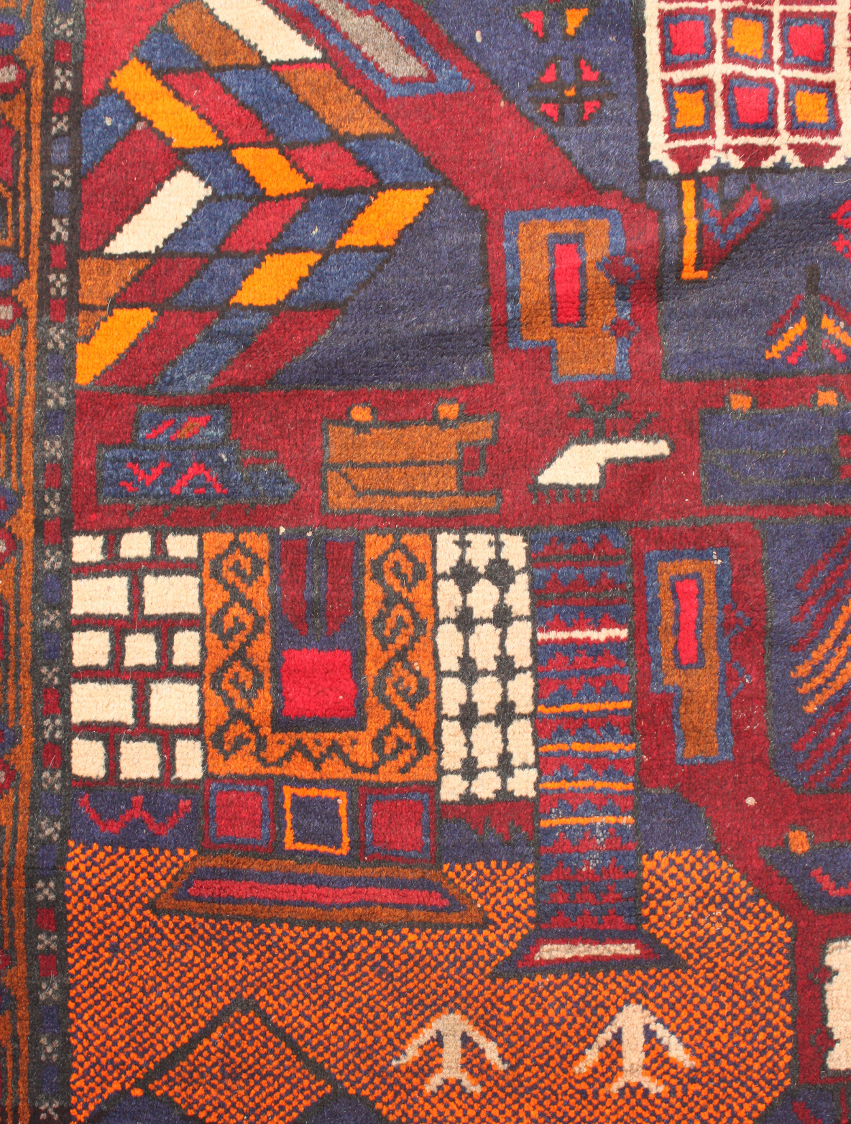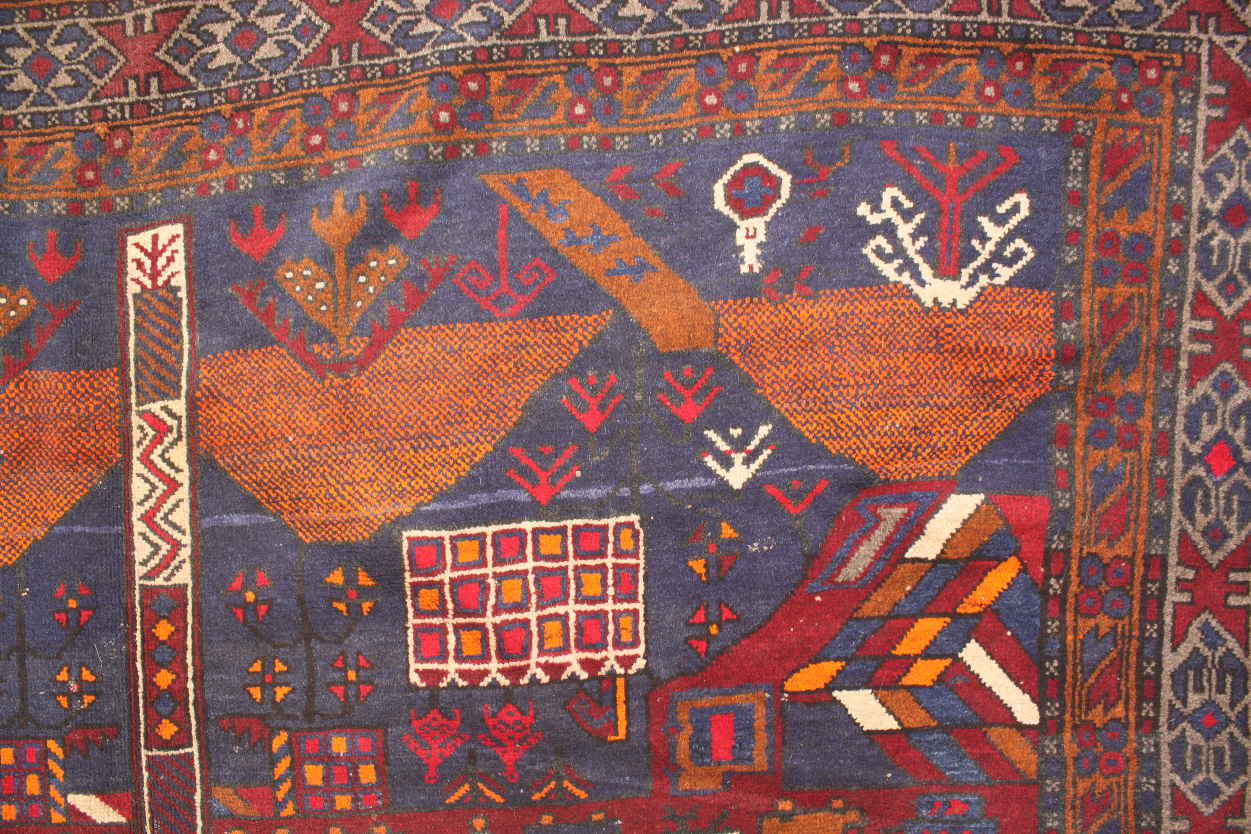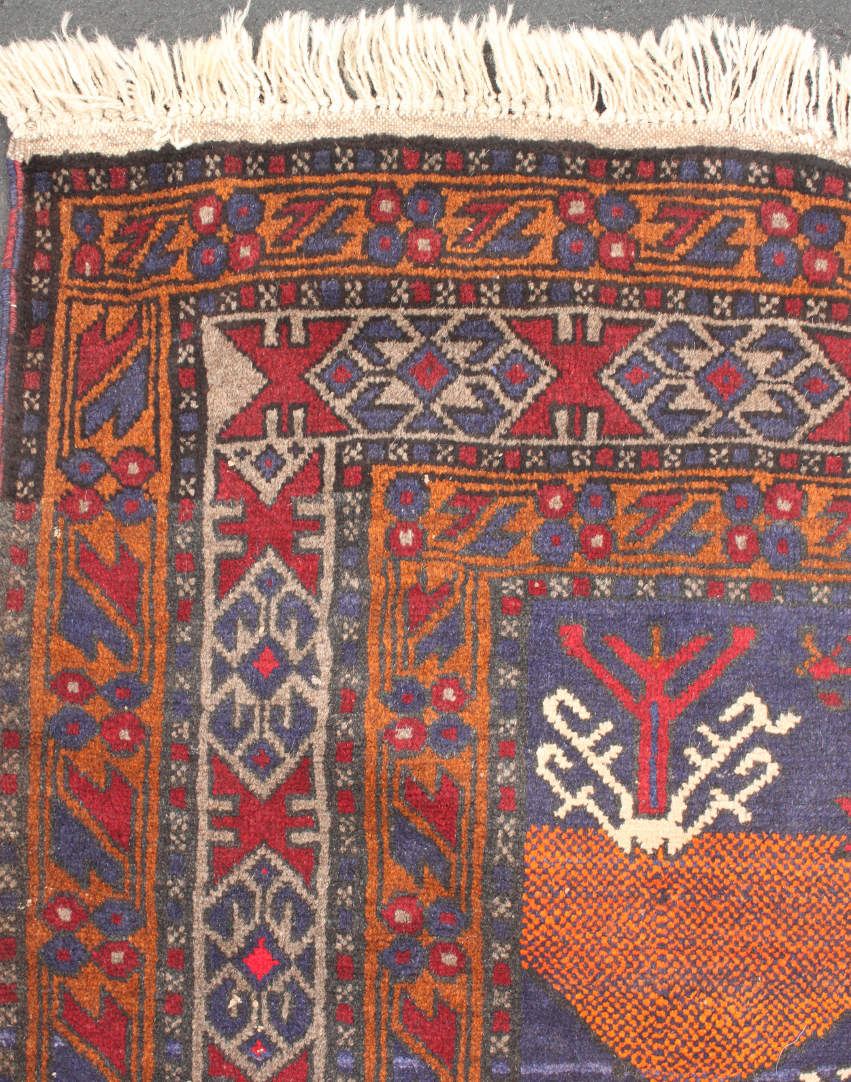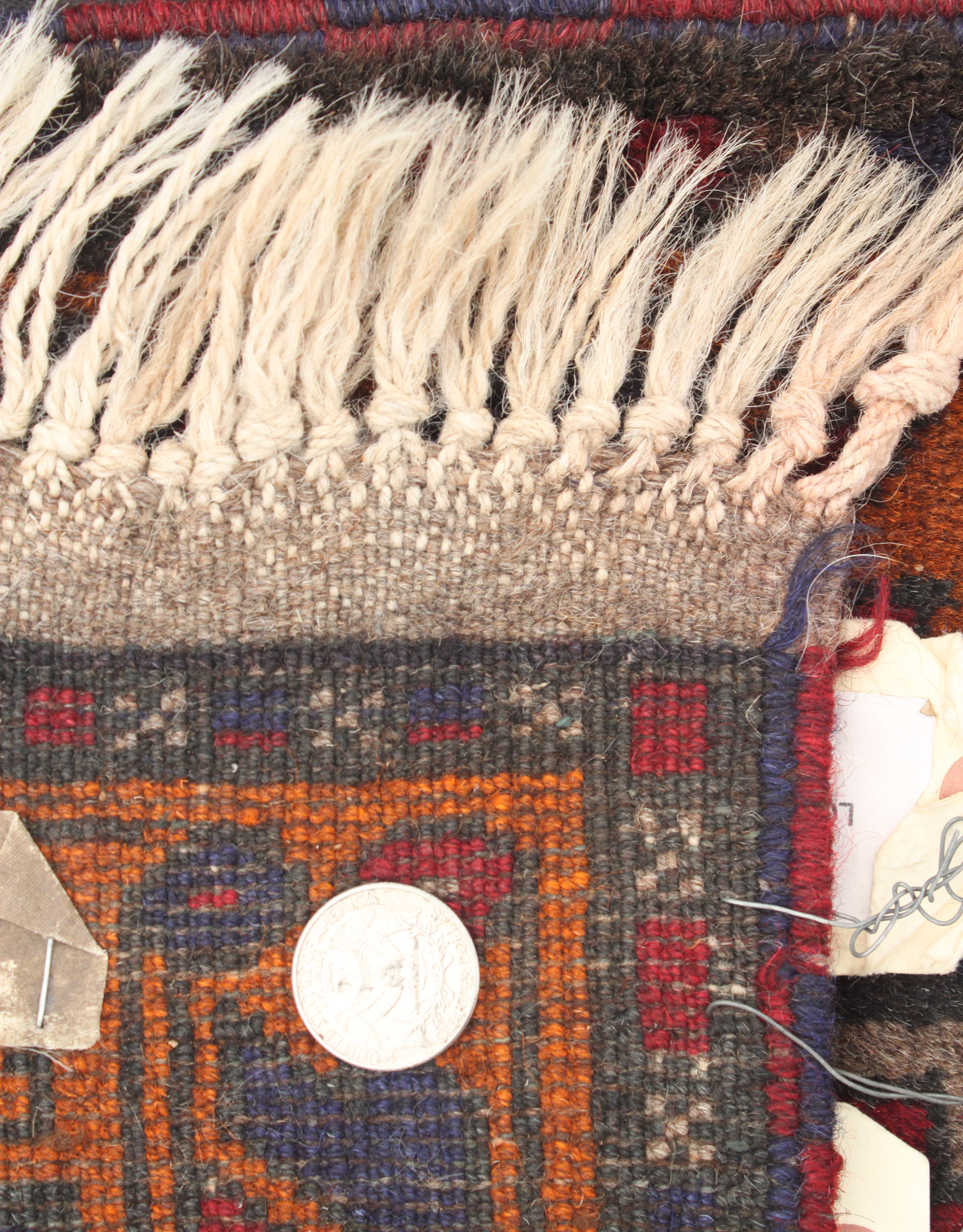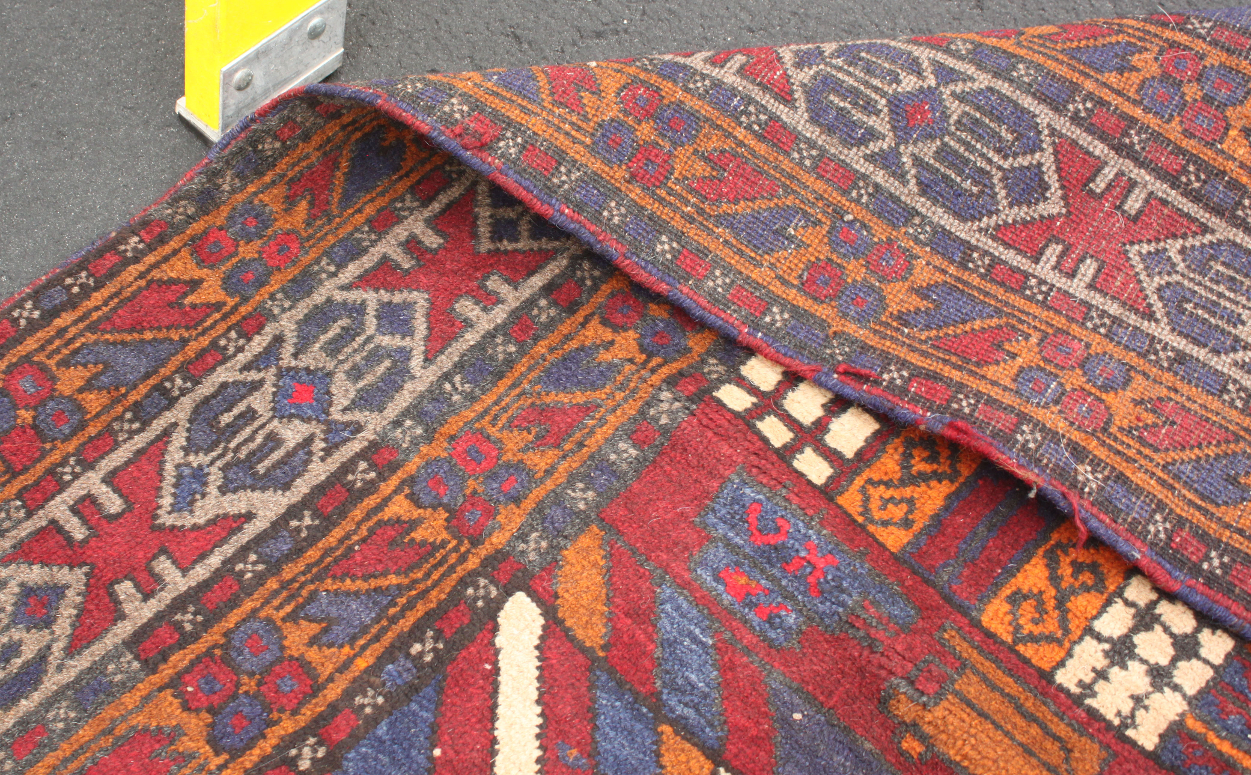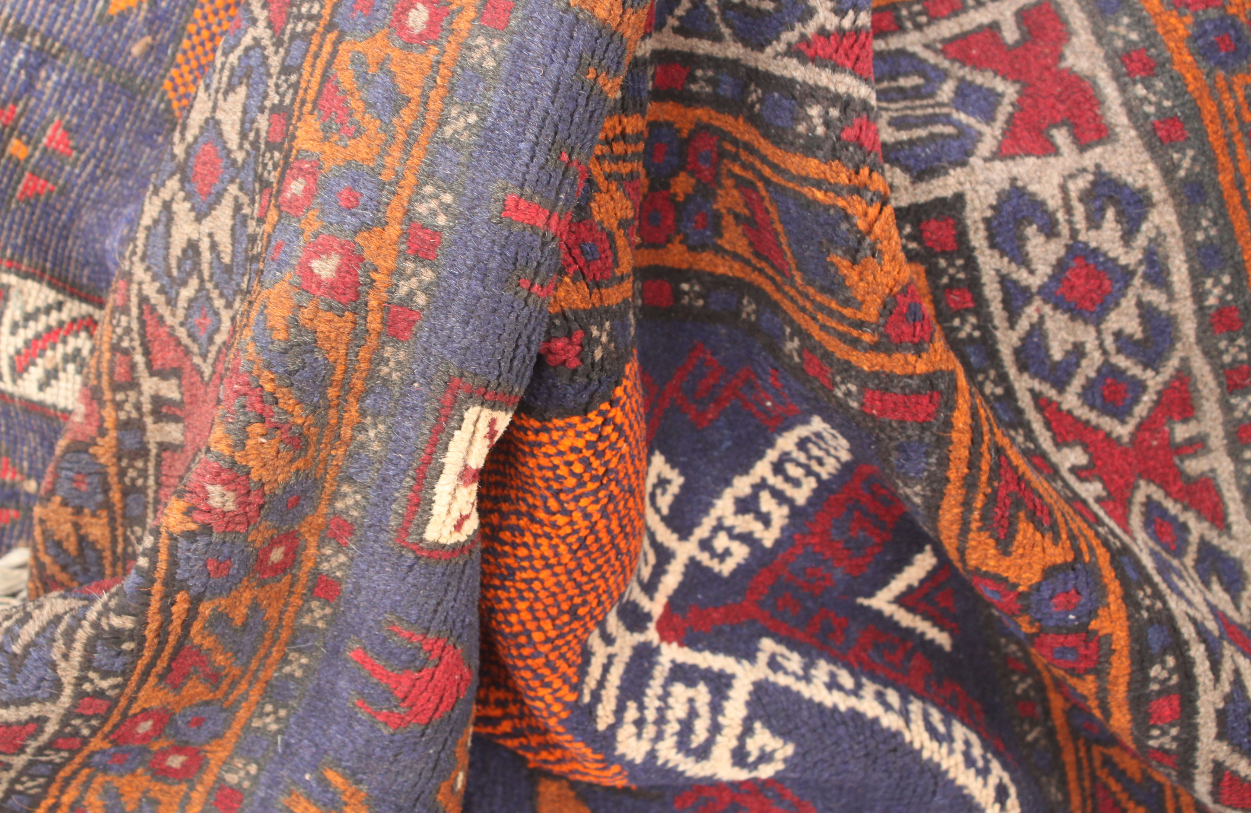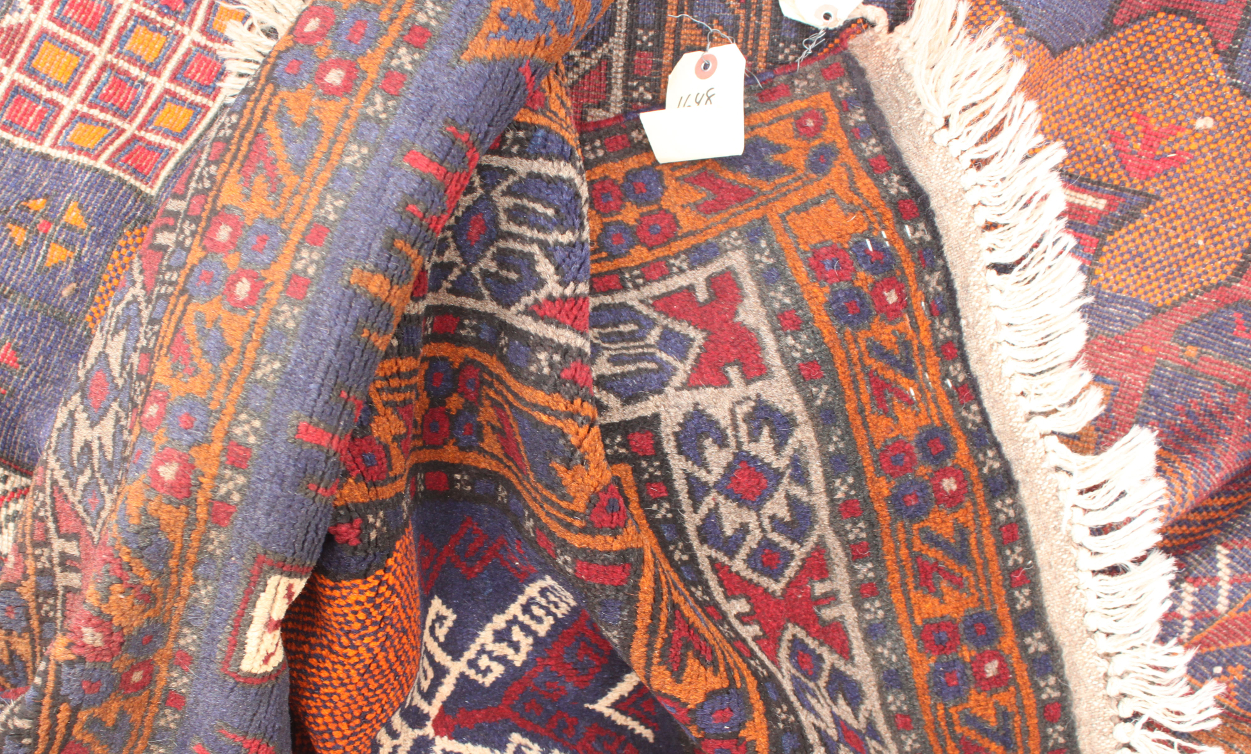Condition:
The main landscape motif in this rug is repeated four times, once in each quadrant. The
rug appears to be a multi-person prayer rug. A strong patterned line separates the two vertical halves, and a red and white barber pole line separates the top and the bottom. One thing that differentiates this rug from
other multi-person prayer rugs is that it is symetrical vertically, so all the minarets cannot point to Mecca.
The influence of
Alighiero e
Boetti on
Afghan rugs is as interesting as it is obvious.
Nigel Lendon
endeavors to
debunk Boetti's influence on Afghan rugs, but winds up proving Boetti's influence.
Boetti also made
symetrical or "specular" works and carpets, but an influence on
"specular" or symmetrical rugs is unlikely. When copying an old rug to make a new rug the design sometimes reverses resulting in backwards images and text as seen in
Soviet Exodus rugs,
WTC rugs, Tora Bora rugs, and Map rugs
like this rug and
this rug.
The composition uses strong diagonals to draw in the eye into the rug and move one's attention around the carpet. At the top the brown triangles at top and bottom adn diagonal brown lines combine with the polychrome checkerboards to activate the composition. In the center, sitting atop the diagonals is a rectangle with orange and red buildings in the corners, and whose sides are the leaf forms between the minarets in the dark sky.
The mirror images across the vertical mid-line is unusual and turns the two panels into one larger scene. The reflection across the center horizon, appears almost like a reflection in water, similar to
this rug and
this rug. This rug is symmetrical vertically and horizontally, it is somewhat similar to this war rug, but nonetheless very unusual.
The image appears to be a mountain landscape with minarets behind the mountains. In front of the mountains is a Soviet armored column, a wall, and another column in front of the wall. The checkerboard pattern gives dramatic spatial depth to the design.
The
armored column (like rug #1082) shows Soviet era cab-over Soviet military trucks points reinforcing the 1980's attribution. The
wool foundation is a early rugs.
Wool: Most rugs are "finished" after being woven. Their pile is clipped and the carpet is washed, sometimes "conditioned", and then blocked while it dries. This rug appears to be 'unwashed', which is very unusual.
Sheen: Matte, dry, dusty.
